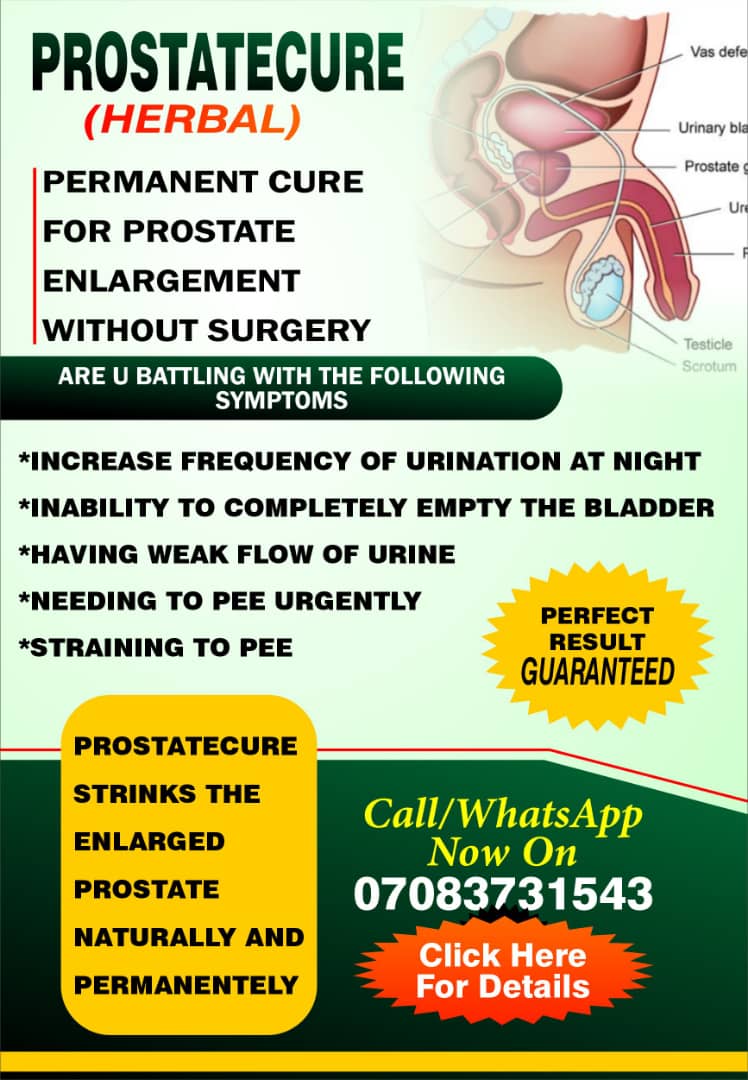

Professor Bernice Adegbehingbe, head of the department of ophthalmology and head of glaucoma services at the Obafemi Awolowo University Teaching Hospital Complex, Ile-Ife, Osun State, this interview with SADE OGUNTOLA, declares that evidence abounds that bitter kola extract eye drops work in the treatment of some forms of glaucoma.
How did you come about using an eye drop for the treatment of glaucoma made from bitter kola?

This is the work of a study that was led by Professor Adefule Ositelu, a retired ophthalmologist from the University of Lagos. She had a glaucoma patient who went away for many years, and when he came back, the patient’s optic nerve and vision remained, although he was not using his doctor’s recommended drugs.
The patient was instead using a homemade treatment that involved soaking bitter kola in water. Professor Ositelu could not believe that the ocular pressure, that is, the pressure in his eyes, remained stable and normal for all the time that he was away. The patient claimed that whenever he eats bitter kola, he feels better and sees better. So, he decided to soak it in water and apply it to his eyes.
For this reason, among others, Professor Ositelu assembled a team of researchers to examine the patient’s claim in further detail. Initially, we did these studies on animals before progressing to trying them out on human beings.
Our studies confirmed that a bitter kola water solution can reduce intraocular pressure in the eyes of rats and rabbits. Studies were conducted by Alcon Laboratory in the United States to find out what chemical content in bitter kola would be helpful in lowering intraocular pressure. Similar studies were carried out in association with a few laboratories and researchers in Cotonou. The analysis confirmed that bitter kola contains some substances that have similar effects with Pilocarpine, a conventional anti-glaucoma medication.
The drug called Pilocarpine can widen the opening in the anterior chamber drainage channel to allow aqueous fluid to exit the eye freely. It confirmed our previous studies in animal and human eyes in 2004 that some constituents of bitter kola were able to reduce intraocular pressure and produce pupillary constriction. Following our research in Nigeria, a different investigation conducted in a different laboratory in Cameroun confirmed our conclusions regarding the advantages of bitter kola in lowering intraocular pressure and producing other pharmacologic effects on the eyes.
What does bitter kola eye drop preparation entail?
I wouldn’t advise people to go ahead and try to prepare the eye drop on their own because of problems like infection. Purchasing prepared bitter kola eye drops directly from the manufacturer, where they are produced hygienically and put through testing, is preferable. In order to extract the compounds in bitter kola that lower intraocular pressure, Professor Ositelu has partnered with a pharmaceutical business. Together, they have prepared and packaged eye drop labels that contain five percent of the active element in bitter kola eye drops. In all honesty, I have no idea how it’s done. Professor Ositelu is the one with the patent for the eye drops.
Were these eye drops tried on patients at the Obafemi Awolowo University Teaching Complex, Ile-Ife?
Prior to Professor Ositelu beginning to market the eye drop, we conducted numerous human trials with patients enrolled at OAUTHC, Ile-Ife. My 2012 presentation at the World Glaucoma Association Conference in Bahrain covered our research on the effectiveness and safety of using a 5% bitter kola solution as an eye drop on patients I treated at the OAUTHC in Ile-Ife. It was a comparative study that involved about four centres, one of which was OAUTHC, Ile-Ife. It compared the efficacy of a 5.0 percent bitter kola eye drop with timolol in newly diagnosed primary open-angle glaucoma patients or people with ocular hypertension. Because the trial was double-blind, the patients were in the dark about what they would get. One half was given an eye drop containing 5 percent bitter kola, whereas the other half received timolol 0.5%.
Timolol is a basic anti-glaucoma drug that, when used as prescribed, is known to lower intraocular hypertension by 15 to 45 percent. For a long time, it has been the most common affordable drug for glaucoma in Nigeria.
We found out that at 6 weeks, 12 weeks, and 24 weeks, respectively, the intraocular pressure-lowering effects of the bitter kola eye drops are about the same as those of Timolol. By 6 weeks, the intraocular pressure had reduced by about 30 percent in both cases. By the end of 24 weeks, the intraocular pressure in both arms of the study had reduced by half in these newly diagnosed open-angle glaucoma patients, which is the most common type of glaucoma in Nigeria. So, the effects were similar and to the same degree in both arms of the study.
Are there studies to follow up on the long-term effects of bitter kola eye drops in these patients?
Our study only lasted for 6 months, during which the patients were routinely given the bitter kola eye drops. They were then given more prescriptions. So we cannot tell the degree of its effectiveness in reducing eye pressure if it is used for more than 6 months. It was never turned into eye drops for sale, even back then. However, now that it is available for sale as 5 percent bitter kola aqueous eye drops, it has proven useful in boosting effective control of pressure in patients with unsatisfactory control from some anti-glaucoma medications. I still have some of my patients using the bitter kola eye drops alongside their other anti-glaucoma medications for better control of their eye pressures, and the eye drops are supplied by Professor Ositelu.
Can it also be a stand-alone treatment?
Yes, it can be a stand-alone treatment for glaucoma. I know of a professor in Eastern Nigeria who has taken numerous anti-glaucoma drugs but whose ability to manage his eye pressure has not improved noticeably. Professor Ositelu granted the wife’s request for an eye drop containing bitter kola, and it was successful. Since then, she has bought it in dozens for her husband’s use.
Which is cheaper, the conventional anti-glaucoma medicine or the bitter kola eye drops?
Bitter kola eye drop is cheaper in the long run because the raw material is locally available and its production is within Nigeria. I think it is about N2500 per bottle, compared with glaucoma medications like Xalatan and Travatan, whose prices are within the range of N10,000 and N13,000 per bottle. The G. Kola eye drops price is about the same as for Timolol.
Can every patient with open-angle glaucoma revert to using Bitter Kola eye drops?
Yes, if it’s well tolerated by them and effective to lower IOP in their type of glaucoma, but that is also dependent on whether such individuals don’t experience any allergic reactions to bitter kola. Not everybody can tolerate bitter kola. I don’t take bitter kola because it gives me some adverse reactions.
Have angle-closure and juvenile glaucoma, among other forms of glaucoma, been treated with bitter kola eye drops?
Other forms of glaucoma, such as juvenile or angle-closure glaucoma, have not been tested. However, juvenile glaucoma is a kind of open-angle glaucoma that occurs in young adults. We have only tested the effectiveness of bitter kola eye drops on adults with open-angle glaucoma and ocular hypertensives. But I suspect that it may have the same effect in the case of juvenile glaucoma, since it is an early-onset type of open-angle glaucoma in younger adults.
Also, if angle closure glaucoma is due to iris bombe that causes closure of peripheral angle, G kola eye drops may be useful. One of the effects of bitter kola eye drops is to pull the iris from the periphery and make the pupil smaller. We also conducted the investigation, in which we looked at how bitter kola affected the diameter of the pupil and discovered that it had a way of constricting the pupil. Therefore, employing a bitter kola eye drop can help treat angle closure glaucoma caused by iris bombe because the iris is pulled from the periphery. Though it won’t be effective in all glaucoma cases. However, it will be effective in the case of open-angle glaucoma, ocular hypertension, and possibly angular glaucoma due to iris bombe.
Can it be used for preventing glaucoma in individuals with a family history of the disease?
As a preventative measure, never apply any medication to the eye, not even bitter kola eye drops. If someone has a family history of glaucoma, that person is already a glaucoma suspect. Nonetheless, I will advise these individuals to get frequent eye exams so that glaucoma may be identified early on and the patient can start therapy, which may include bitter kola eye drops if they are available.
Can bitter kola eye drops cure glaucoma?
I must say that glaucoma does not have a cure, but we can prevent further deterioration in vision with the different treatments. With various available treatments to lower intraocular pressure, we can prevent damage to the optic nerve; nevertheless, no amount of medicinal, surgical, or laser intervention can undo damage that already occurred prior to the intervention. With bitter kola eye drops, it works similarly. In most circumstances, the damage will already be present, regardless of how much was done before the treatment began. However, there won’t be any further harm after using Bitter Kola Eye Drops to reduce the pressure.
Will the intraocular pressure return to a high level when bitter kola eye drops are discontinued?
When the medication is stopped, the pressure will rise. The only situation in which the pressure might not rise is if you have had laser treatment or eye surgery to lower the pressure; however, even in those situations, you will still need to be closely monitored because, over time, intraocular pressure will rise again. Most of these medications work by decreasing the amount of fluid in the eye that is causing glaucoma or increasing the amount of fluid that is coming out of the eye; therefore, if you stop the medication, the pressure will return to its previous level. Thus, glaucoma medicine needs to be taken continuously throughout life. Any attempt to quit taking the drug causes pressure to rise once more, which either restarts or prolongs the damage to the retina and optic nerve.
Can merely chewing the nuts help to lower the pressure inside their eyes?
It will function, though maybe not to the same extent as if applied as an eye drop. The digestive system’s enzymes would have worked on some of its components. However, the numerous health advantages of bitter kola have been demonstrated. Chewing the nuts has been reported to be beneficial for several ailments, including arthritis. Ingesting bitter kola boosts metabolism, aids digestion, and increases blood circulation. It has antibacterial, antiviral, and antifungal effects, especially on eye infections. Studies have shown this to be the case. When it is used, the infection will gradually go away.
What will be your advice regarding compliance with medication?
An early diagnosis and effective treatment are the best things. Individuals have a chance of eventually becoming blind once the condition progresses, even in developed nations. Treatment for glaucoma should come from eye specialists. Additionally, after receiving a diagnosis and starting treatment, they must schedule routine eye exams. The patient should know that the use of medication does not reverse vision. So, if they need glasses to see better, they will be given glasses. However, the damage to the eye occurs before the patient’s specialist begins treatment, and in most cases, it is irreversible. The loss of visual field is almost irreversible. But the problem we have with patients is that when they start using their medication and they don’t see much improvement in their vision, they stop using the medication.
They say I have been using this medication for the last year, and I have not seen any change. Why, then, should I be wasting my money? Patients should understand that the purpose of the drug is to stop their vision from getting worse and eventually becoming completely blind. The harm to the retinal ganglion cells and optic nerve will not halt the instant they quit using the drug. And then vision will slowly be lost without the patient knowing. Unfortunately, the blindness caused by glaucoma cannot be reversed. We refer to the most common type of glaucoma as a silent thief of sight for this reason. It moves slowly.
It should be noted that someone may be able to read your Quran or Bible tonight and wake up the following morning and not see again.” Why? It is because the last aspect of vision often retained is the central vision. This is the vision that we use for moving about, climbing the stairs, and reading a book. These individuals have very narrow vision, but they still think that they have good sight. However, a slight increase in ocular pressure can cause it to disappear overnight.
So, that is why a glaucoma patient must see his doctor on a regular basis. Even if your intra-ocular (eye) pressure is under control, perhaps check in with your doctor every three months to ensure that the disease is not progressing. Since the condition has no signs or pain, you won’t be able to tell if your eye is growing worse despite your medicine. Additionally, we might need to add more medication or raise the dosage if we discover that this drug isn’t working as well as it did when we initially started. Also, alternative care with lasers or surgery may be necessary for better and more sustained control of eye pressure.
What should the government do regarding access to care for glaucoma?
Glaucoma is a public health problem; it is at an epidemiological level now. It is a common disease, and the rate at which people are going blind is alarming. The government ought to be concerned about it since blindness affects the community’s social and economic fabric. A blind person is not going to be economically viable or productive, and he is going to impinge on the economic life of somebody who is looking after him or her, so the government should be involved in preventing blindness. Subsidising the care of glaucoma patients is one way they can achieve that. Most of the people with glaucoma are low- and medium-income earners and cannot afford its treatment. The government needs to act and support glaucoma patients’ care if it hopes to decrease poverty, which is linked to blindness.
Read Also: NELFUND, Kebbi govt partner to expand student loan access








